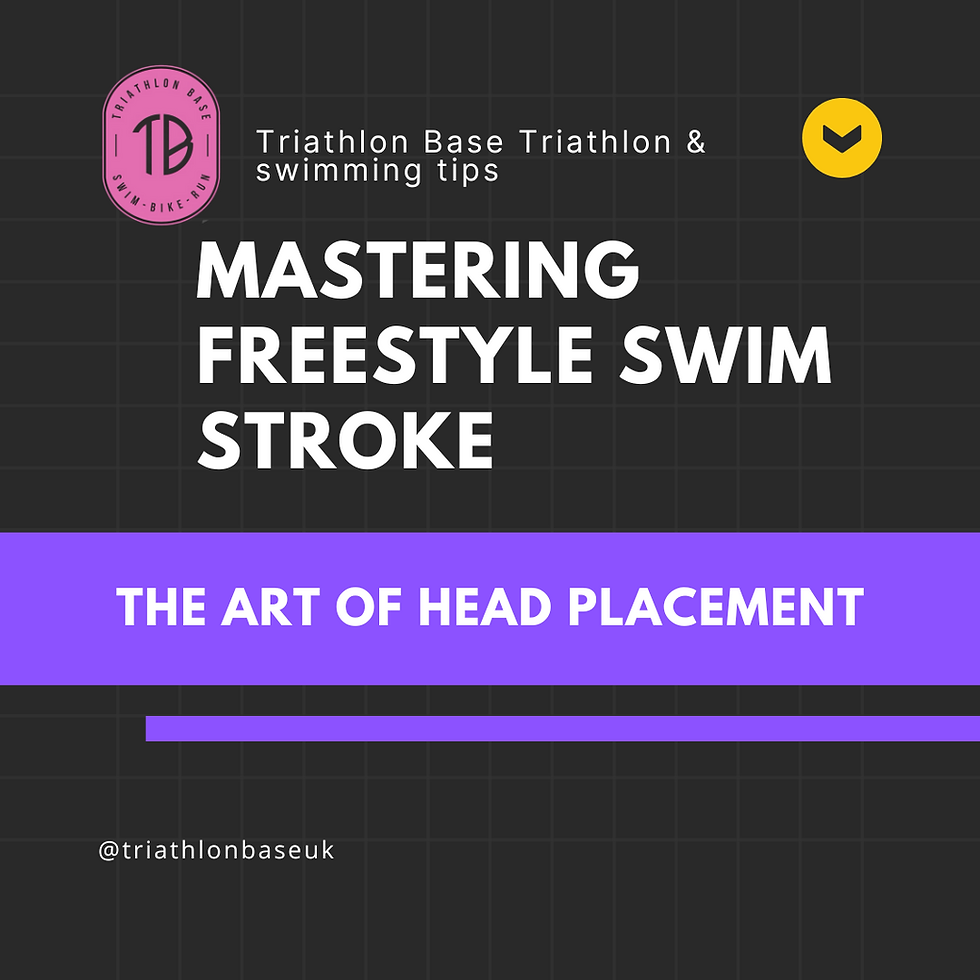Ironman Triathlon vs. Sprint Triathlon
- Coach Mark

- Mar 11, 2023
- 3 min read
Updated: Mar 27, 2023
Ironman and sprint triathlons are two of the most popular triathlon distances. While they both consist of swimming, cycling, and running, the distances are vastly different. A sprint triathlon typically involves a 750m swim, a 20km bike ride, and a 5km run, whereas an Ironman triathlon is much longer, with a 3.8km swim, a 180km bike ride, and a 42.2km run (a full marathon).
The training for these two events will also differ greatly, as the level of endurance required to complete an Ironman is much higher than that needed for a sprint triathlon. An Ironman requires months of consistent training, while a sprint triathlon can be completed with a few weeks of preparation.
Training Sessions for Ironman vs. Sprint Triathlon
The training sessions for Ironman and sprint triathlons will differ significantly. Ironman training requires a lot of time and commitment, as you need to build up your endurance gradually over time. This typically involves completing long, endurance-building sessions in all three disciplines, as well as strength training to build overall fitness.

Sprint Triathlon Training Plan (1 Week)
Monday
Swim: 30-minute freestyle swim
Run: 45-minute run at a moderate pace
Tuesday
Bike: 1-hour moderate-intensity ride
Run: 30-minute speed intervals
Wednesday
Rest day or yoga
Thursday
Swim: 45-minute freestyle swim with drills
Bike: 1-hour tempo ride
Friday
Run: 30-minute speed intervals
Bike: 45-minute easy ride
Saturday
Brick workout: 20-minute bike ride followed by a 5k run at race pace
Sunday
Rest day or yoga
Ironman Triathlon Training Plan (1 Week)
Monday
Swim: 1-hour open water swim or pool session
Bike: 2-hour moderate-intensity ride
Tuesday
Run: 1-hour hill repeats or tempo run
Swim: 1-hour pool session with drills
Wednesday
Bike: 2.5-hour long ride at a moderate pace
Run: 1-hour easy run
Thursday
Rest day or yoga
Friday
Swim: 1.5-hour open water or pool session with drills
Bike: 2.5-hour ride with intervals and hill climbs
Saturday
Brick workout: 3-hour bike ride followed by a 1-hour run at race pace
Sunday
Long run: 3-hour long run at an easy pace
As you can see, the training for an Ironman triathlon is much more intense and time-consuming than a sprint triathlon. Ironman athletes need to build up their endurance gradually over time, with longer and more frequent training sessions in all three disciplines, while sprint triathletes focus on shorter, more intense workouts to build speed and power. Nutrition plays an essential role in both types of training, with Ironman athletes requiring more carbohydrates and protein to fuel their endurance training, while sprint triathletes focus on lean protein to build and maintain muscle mass.
In contrast, sprint triathlon training involves shorter, more intense training sessions, focusing on speed and power. This may include high-intensity interval training (HIIT) sessions and shorter, more intense sessions in all three disciplines.
Nutrition Requirements for Ironman vs. Sprint Triathlon
Nutrition is an essential component of triathlon training, and the requirements for Ironman and sprint triathlons will differ significantly. Ironman athletes need to consume enough calories to fuel their training and recover from their workouts. This typically involves a balanced diet with a high percentage of carbohydrates to fuel endurance, along with adequate protein and healthy fats.
In contrast, sprint triathletes require a diet that will help them build and maintain lean muscle mass. This may involve consuming more protein than Ironman athletes, along with healthy fats and carbohydrates to fuel their workouts.
In conclusion, while both Ironman and sprint triathlons involve swimming, cycling, and running, the differences in distance require vastly different training regimes and nutrition requirements. Ironman training involves long, endurance-building sessions, while sprint triathletes focus on shorter, more intense training sessions. Similarly, Ironman athletes require a high percentage of carbohydrates to fuel endurance, while sprint triathletes require more protein to build and maintain lean muscle mass. Regardless of which distance you choose, the key to success in triathlon is consistency, commitment, and a willingness to push yourself to your limits.






Comments